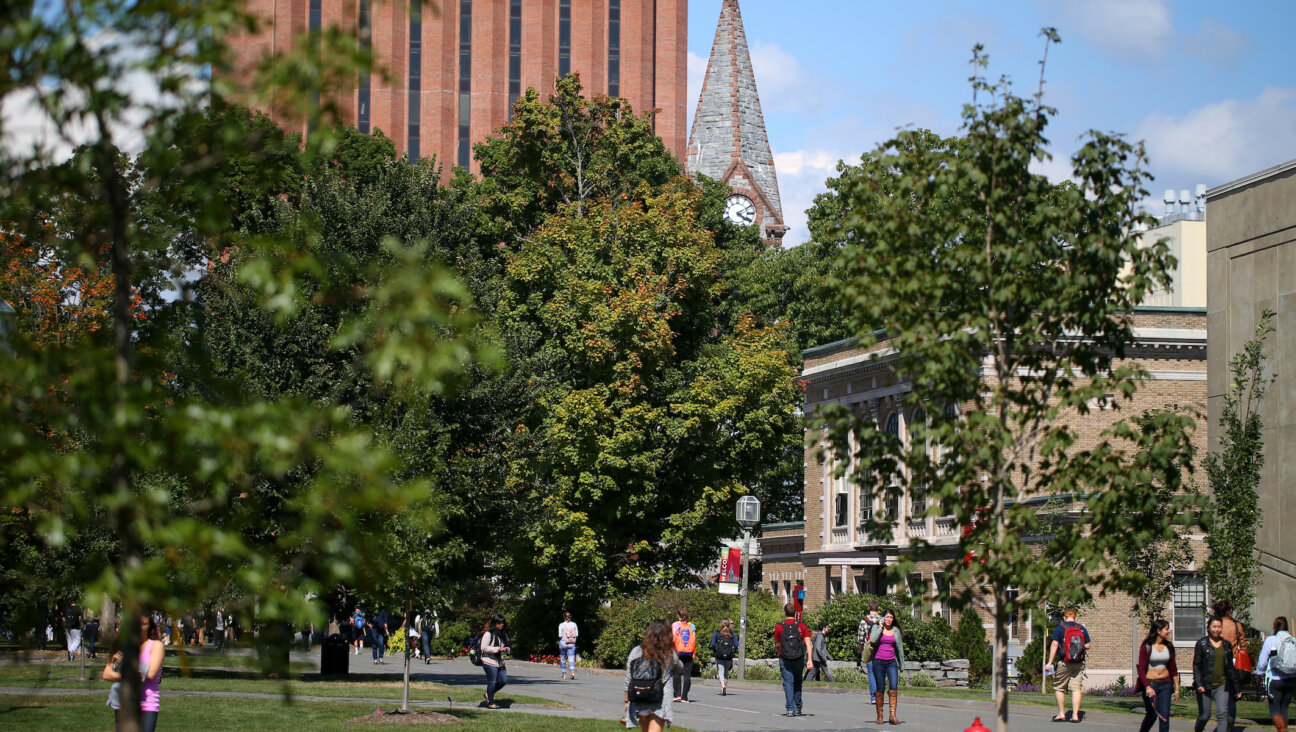A haredi Orthodox ‘City of Torah’ is planned in Mexico, first in Latin America

Courtesy of jta
(JTA) — The foundation stone has been laid for a “City of Torah” in Mexico, the first village in Latin America to be comprised almost exclusively of haredi Orthodox Jews.
The village, under construction near Ixtapan de la Sal, a small town about 75 miles southwest of Mexico City, will begin with 40 houses and hopes to attract 120 families by 2024, its developers said at a ceremony last week marking the project launch.
It will span about a square mile at first and feature a yeshiva; synagogues and schools for both its Ashkenazi and Sephardic populations; a kosher supermarket; and a gym complex with a pool, spa and sport venue. The funding is primarily from a businessman, Abraham Mizrahi, who is not haredi Orthodox. Mexican Rabbi Yosef Tawil was appointed chief of the town’s rabbinical council.
The project’s lead developer Moises Shemaria, who also is not haredi, mentioned the town of Lakewood, New Jersey — a municipality with a high proportion of ultra-Orthodox Jews — in his speech at the groundbreaking event.
“We are open to receive haredim from México and Latin America,” he said. “Our brothers from Argentina, Venezuela, Panama, Chile and others deserve to live in a first-class place with Torah. They can’t buy a $1 million apartment in Lakewood. They will be welcomed here with nice houses from $120,000.”
But the town may bear more similarities to the village of Palm Tree — formerly called Kiryas Joel — in New York state, an enclave mostly made up of 20,000 Yiddish-speaking Orthodox Jews that seceded from a larger town in 2017.
Shemaria referred several times in his speech to the regional scope of the project, saying the first 40 houses have been sold to buyers from Mexico, Argentina and Venezuela. He added that house prices will range from $120,000 to $218,000.
Mexico is home to approximately 40,000 Jews, according to Hebrew University demographer Sergio DellaPergola. He estimates that Latin America as a whole has a Jewish population of 379,200 to 707,000: The lower number is its “core” Jewish population, those who strongly identify as Jewish, and the higher figure counts those with enough Jewish ancestry to have the option of applying for Israeli citizenship.
In Argentina, the country with the largest Jewish population in the region, a project similar to Ciudad de la Tora had been planned but was never carried out.
“Some people want to build a place for Orthodox Jews also here in Argentina, but no one started the project,” said Rabbi Eliahu Hamra, secretary general of BUR, the Orthodox bloc that ruled the country’s AMIA Jewish group.
“For sure there will be students from Argentina interested in going there, to study in the Mexican City of Torah.”
The post A haredi Orthodox ‘City of Torah’ is planned in Mexico, first in Latin America appeared first on Jewish Telegraphic Agency.
The Forward is free to read, but it isn’t free to produce

I hope you appreciated this article. Before you go, I’d like to ask you to please support the Forward.
Now more than ever, American Jews need independent news they can trust, with reporting driven by truth, not ideology. We serve you, not any ideological agenda.
At a time when other newsrooms are closing or cutting back, the Forward has removed its paywall and invested additional resources to report on the ground from Israel and around the U.S. on the impact of the war, rising antisemitism and polarized discourse.
This is a great time to support independent Jewish journalism you rely on. Make a gift today!
— Rachel Fishman Feddersen, Publisher and CEO
Support our mission to tell the Jewish story fully and fairly.
Most Popular
- 1

Fast Forward Ye debuts ‘Heil Hitler’ music video that includes a sample of a Hitler speech
- 2

Opinion It looks like Israel totally underestimated Trump
- 3

Culture Cardinals are Catholic, not Jewish — so why do they all wear yarmulkes?
- 4

Fast Forward Student suspended for ‘F— the Jews’ video defends himself on antisemitic podcast
In Case You Missed It
-

Culture How one Jewish woman fought the Nazis — and helped found a new Italian republic
-

Opinion It looks like Israel totally underestimated Trump
-

Fast Forward Betar ‘almost exclusively triggered’ former student’s detention, judge says
-

Fast Forward ‘Honey, he’s had enough of you’: Trump’s Middle East moves increasingly appear to sideline Israel
-
Shop the Forward Store
100% of profits support our journalism
Republish This Story
Please read before republishing
We’re happy to make this story available to republish for free, unless it originated with JTA, Haaretz or another publication (as indicated on the article) and as long as you follow our guidelines.
You must comply with the following:
- Credit the Forward
- Retain our pixel
- Preserve our canonical link in Google search
- Add a noindex tag in Google search
See our full guidelines for more information, and this guide for detail about canonical URLs.
To republish, copy the HTML by clicking on the yellow button to the right; it includes our tracking pixel, all paragraph styles and hyperlinks, the author byline and credit to the Forward. It does not include images; to avoid copyright violations, you must add them manually, following our guidelines. Please email us at [email protected], subject line “republish,” with any questions or to let us know what stories you’re picking up.













